
My San Francisco Sourdough Quest, Take 6 (and final?)
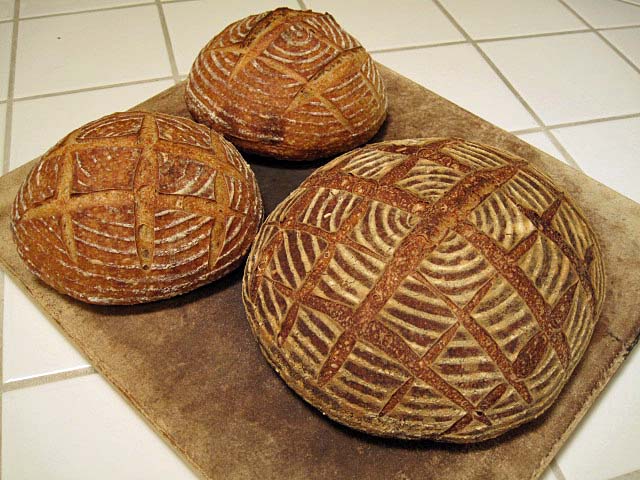
My series of San Francisco-style sourdough bread bakes has featured several variations of levain elaboration, leaving the final dough ingredients and procedures essentially constant. Today's variation involved using a firm starter to activate the stock starter and building the stiff levain which is mixed in the final dough in three steps, rather than two. In addition, rather than retarding an intermediate build, I retarded the stiff levain.
You may also note that the activation and intermediate builds used a flour mixture of 75% AP and 25% WW flour. Re-reading my class notes from the SFBI Artisan II workshop, I was reminded that this was the feeding mixture recommended by the SFBI instructor. I thought I would give it a try.
Feeding the starter twice in 24 hours demonstrated a dramatic increase in the leavening power of the starter. The second feeding expanded dramatically faster than the first. And, even though the total fermentation time (not counting the overnight retardation) of the stiff levain was shorter than previous versions, it was very nicely expanded.
I started with my stock refrigerated 50% starter that had been fed last weekend. That feeding consisted of 50 g active starter, 100 g water and 200 g starter feeding mix. My stock starter feeding mix is 70% AP, 20% WW and 10% whole rye flour.
I activated the starter with a feeding of 20 g stock starter, 25 g water, 37 g of AP and 13 g of WW flour. This was fermented at room temperature for 16 hours. I then built an intermediate starter using 40 g of the activated starter, 50 g of water, 75 g of AP and 25 g of WW flour. This second build was fermented at room temperature for 12 hours. I then mixed the stiff levain.
Stiff levain | Bakers' % | Wt (g) for 1 kg | Wt (g) for 2 kg |
Bread flour | 95 | 78 | 157 |
Medium rye flour | 5 | 4 | 8 |
Water | 50 | 41 | 82 |
Stiff starter | 80 | 66 | 132 |
Total | 230 | 189 | 379 |
Dissolve the starter in the water. Add the flour and mix thoroughly until the flour has been completely incorporated and moistened.
Ferment at room temperature for 6 hours, then refrigerate for 14 hours.
Take the levain out of the refrigerator and ferment at 85ºF for 3 hours.
Final dough | Bakers' % | Wt (g) for 1 kg | Wt (g) for 2 kg |
AP flour | 90 | 416 | 832 |
WW Flour | 10 | 46 | 92 |
Water | 73 | 337 | 675 |
Salt | 2.4 | 11 | 22 |
Stiff levain | 41 | 189 | 379 |
Total | 216.4 | 999 | 2000 |
Method
In a stand mixer, mix the flour and water at low speed until it forms a shaggy mass.
Cover and autolyse for 90 minutes
Add the salt and levain and mix at low speed for 1-2 minutes, then increase the speed to medium (Speed 2 in a KitchenAid) and mix to get early window paning. (This took about 10 minutes.) Add flour and water as needed. The dough should be rather slack. It should clean the sides of the bowl but not the bottom.
Transfer to a lightly floured board and do a stretch and fold and form a ball.
Place the dough in a lightly oiled bowl and cover tightly.
Ferment at 76º F for 3 1/2 to 4 hours with a stretch and fold at 50 and 100 minutes.
Divide the dough as desired. (Note: I had made 2 kg of dough which I divided into 1 1 kg piece and two 500 g pieces.)
Pre-shape as rounds and rest, covered, for 10 minutes.
Shape as boules or bâtards and place in bannetons. Place bannetons in plastic bags.
Proof at room temperature (68-70º F) for 2-3 hours.
Cold retard the loaves overnight (12-14 hours).
The next morning, proof the loaves at 85º F for 3 hours. (If you can't create a moist, 85 degree F environment, at least try to create one warmer than “room temperature.”)
45-60 minutes before baking, pre-heat the oven to 480º F with a baking stone and steaming apparatus in place.
Transfer the loaves to a peel. Score the loaves as desired, turn down the oven to 460º F, steam the oven, and transfer the loaves to the baking stone.*
After 15 minutes, remove the steaming apparatus, and turn down the oven to 435º F/Convection. (If you don't have a convection oven, leave the temperature at 460º F.)*
Bake for another 15 minutes.*
Turn off the oven, and leave the loaves on the stone, with the oven door ajar, for another 15 minutes.
Transfer the loaves to a cooling rack, and cool thoroughly before slicing.
*Note: I baked the two smaller boules first – 15 minutes at 460ºF with steam, then 15 minutes at 435ºF convection bake. I then baked the 1 kg boule after reheating the oven for 25 minutes – 15 minutes at 450ºF, then another 25 minutes at 430ºF.
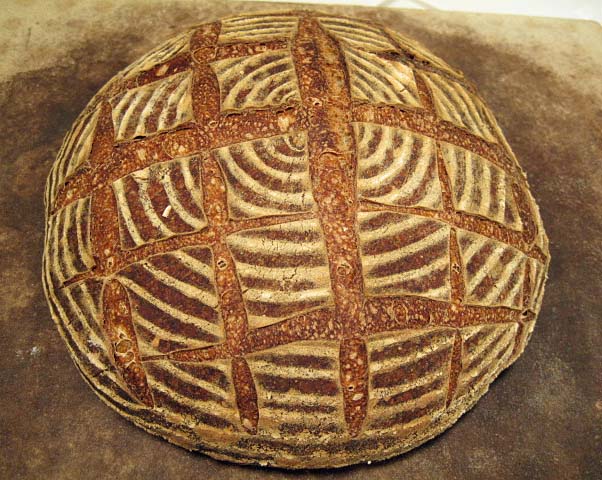
San Francisco-style Sourdough, large boule

San Francisco-style Sourdough, large boule crumb
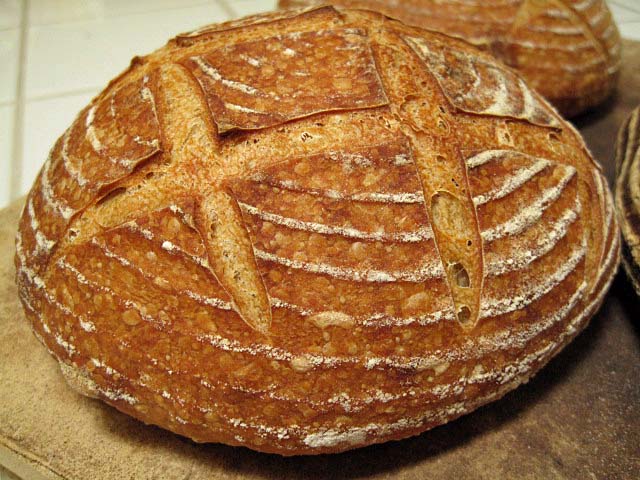
San Francisco-style Sourdough, small boule

San Francisco-style Sourdough, small boule crust close-up
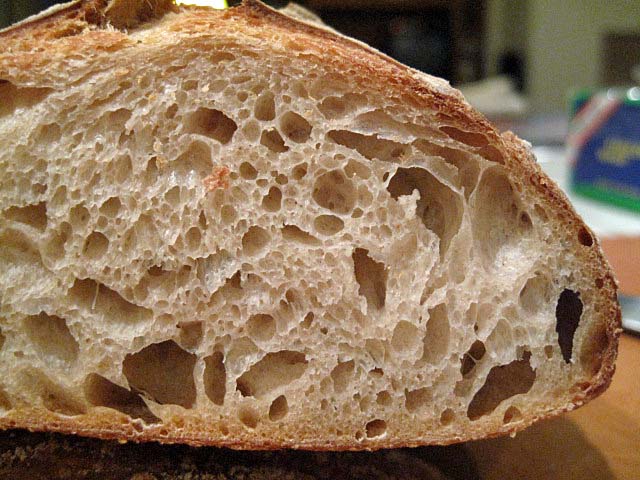
San Francisco-style Sourdough, small boule crumb
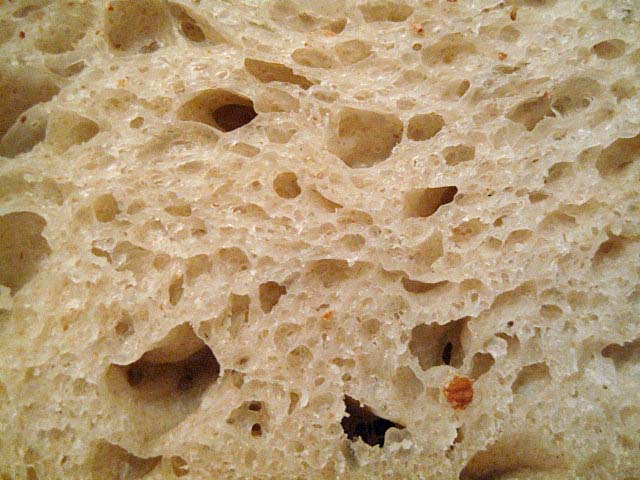
San Francisco-style Sourdough, small boule crumb close-up
The appearance of the loaves was like those previously baked, as were the crust and crumb structure. However, the flavor had a prominent sourdough tang. This bread was quite similar to the bake I blogged on March 19, 2012 (See: My San Francisco Sourdough Quest, Take 4)
This is the crunchy crust, chewy crumb, moderately sour loaf I was after … at least it's close. I cannot say it replicates the “Wharf Bread” from Parisian Bakery I ate in San Francisco years ago. It has a less sweet, more whole grain flavor. The crust is thicker and crunchier. The crumb structure is more open. But it's a keeper. This is the one I'll be making from now on ... or until I can't resist tweaking it further.
I think it would go great with Dungeness crab!
David
Submitted to YeastSpotting



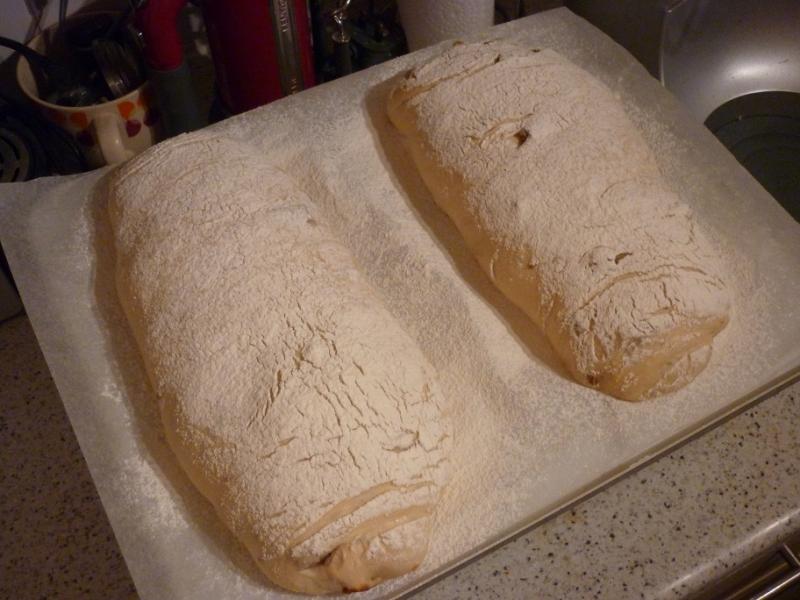
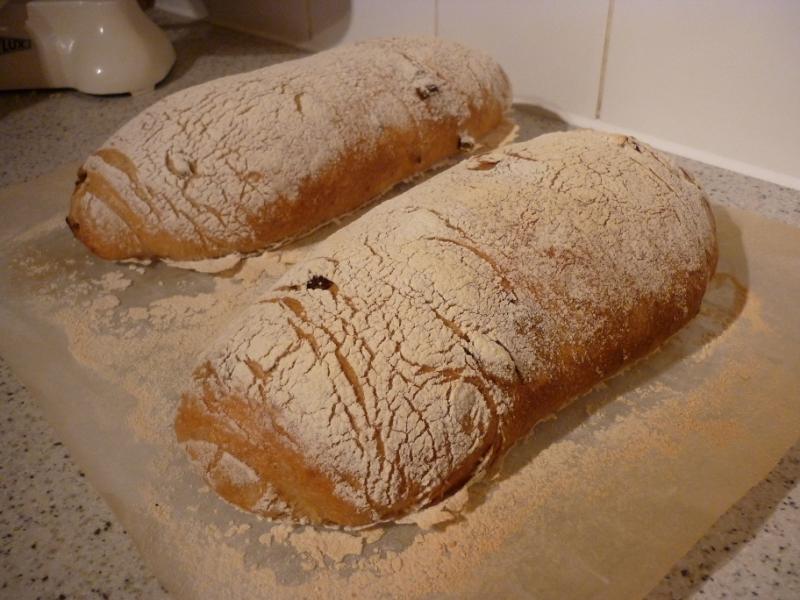
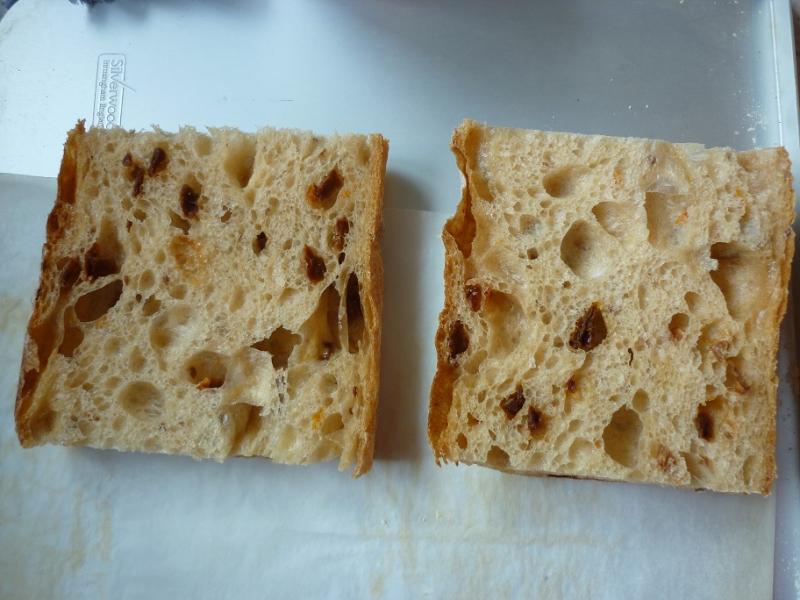




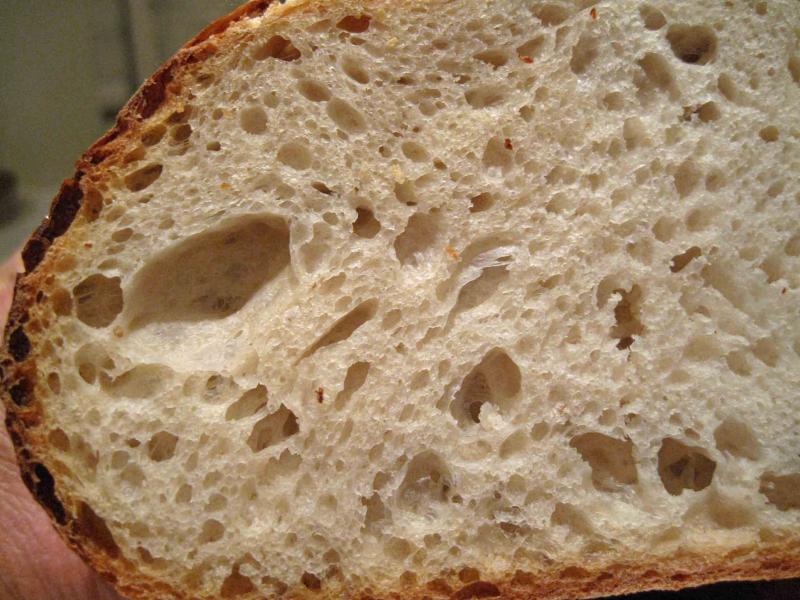

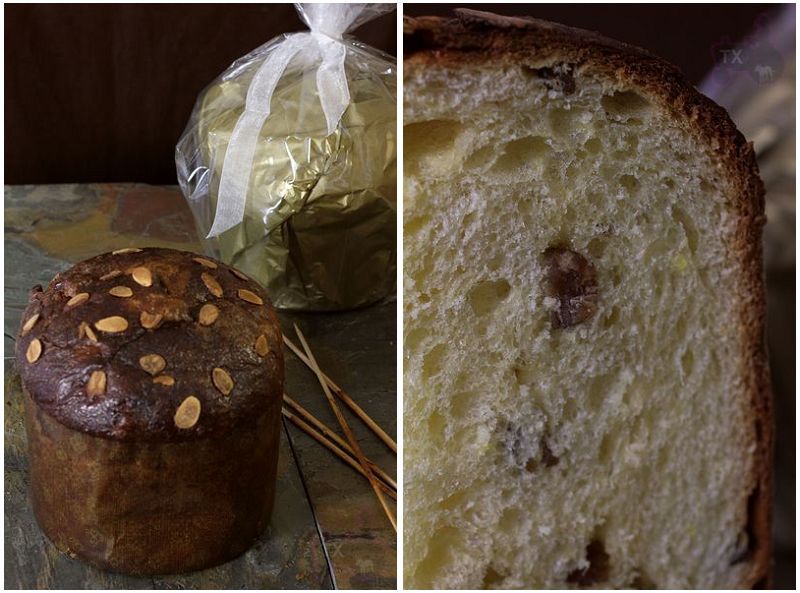
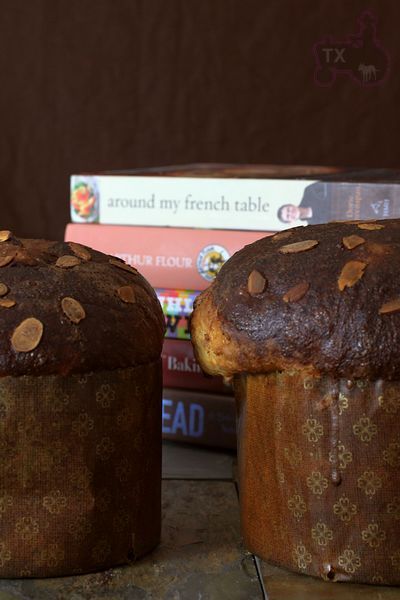


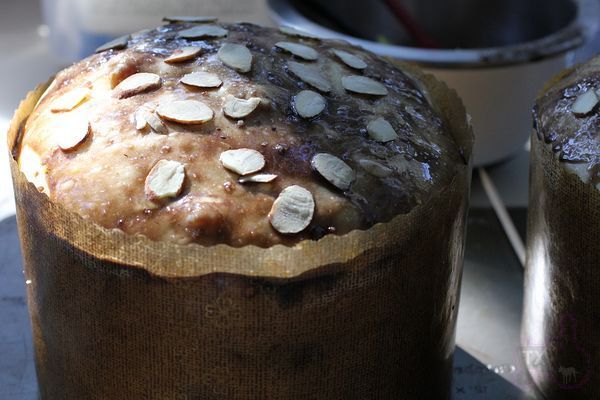
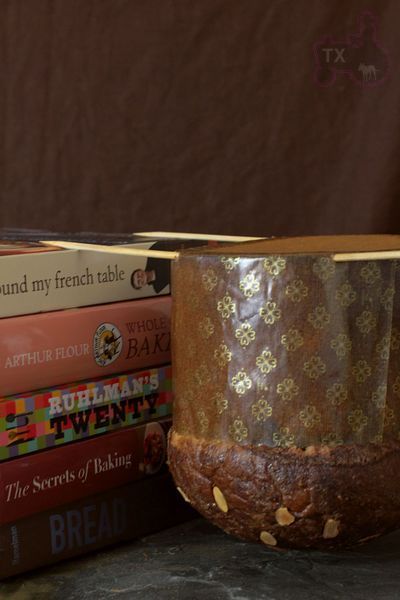
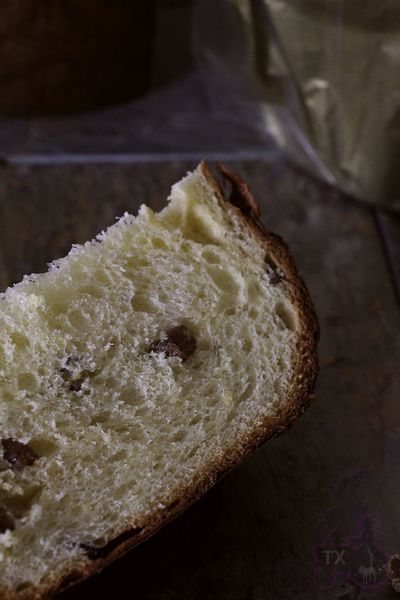
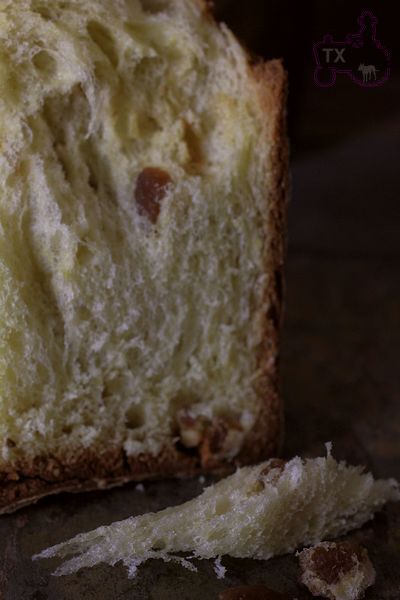
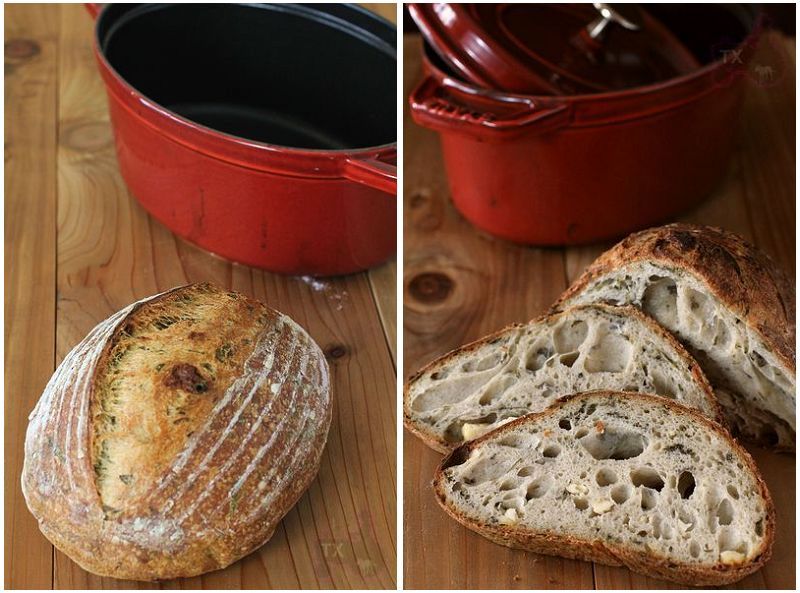
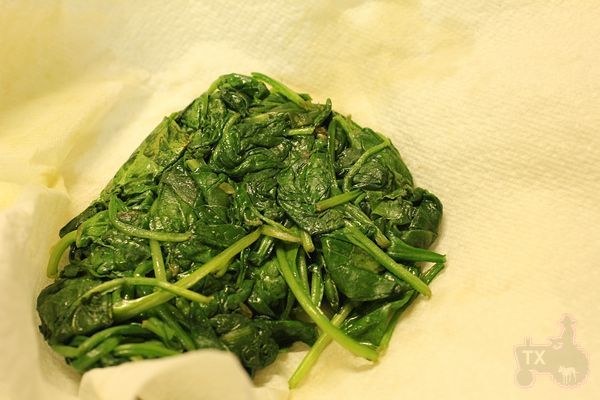
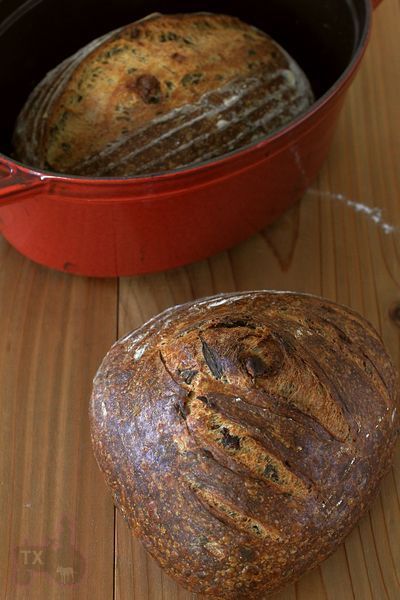
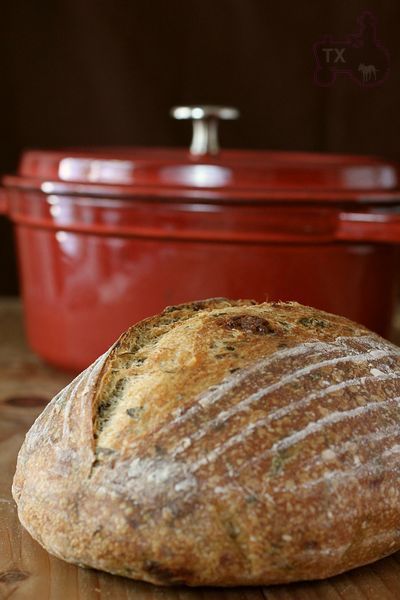
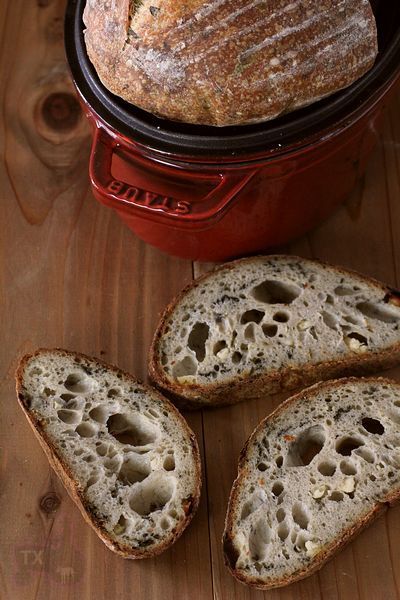
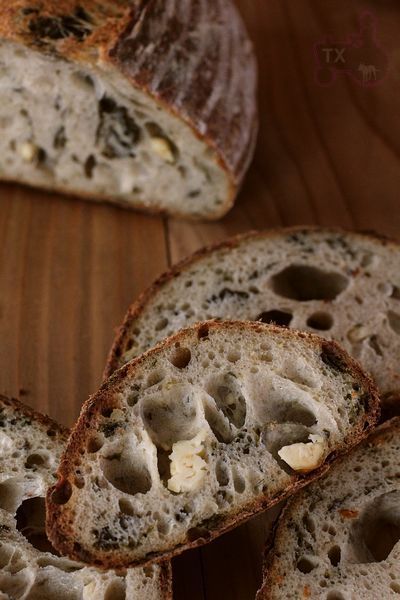

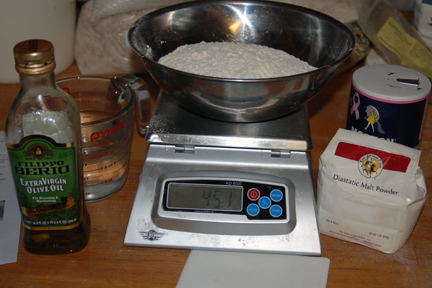
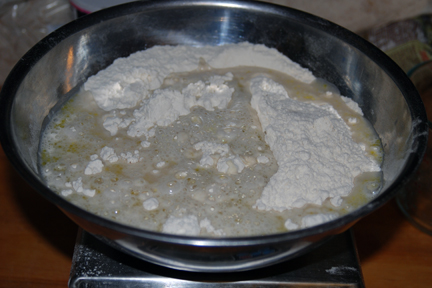
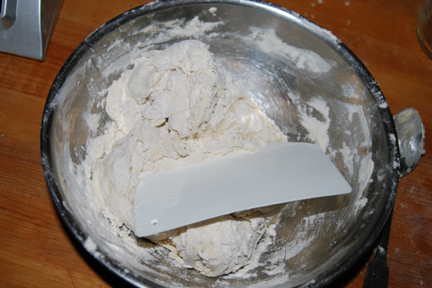
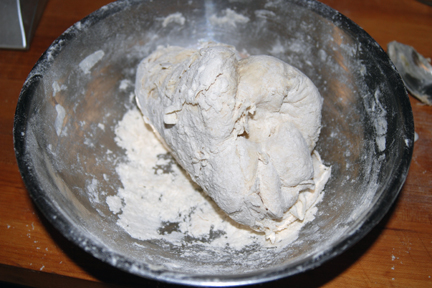
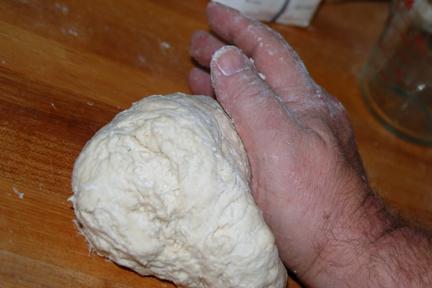

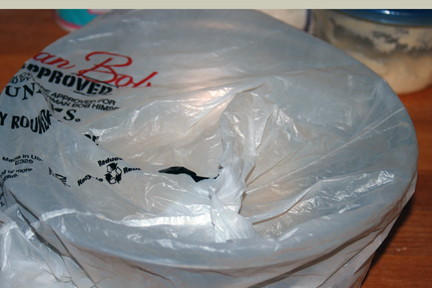

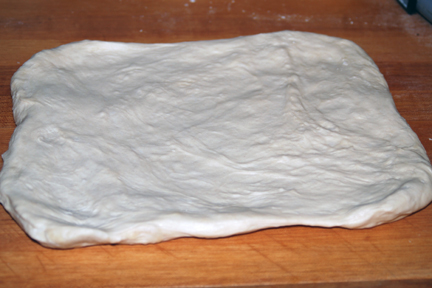
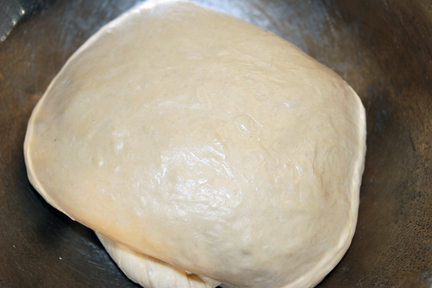
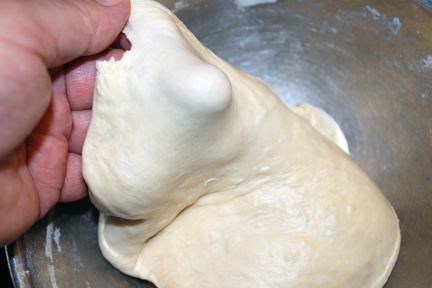
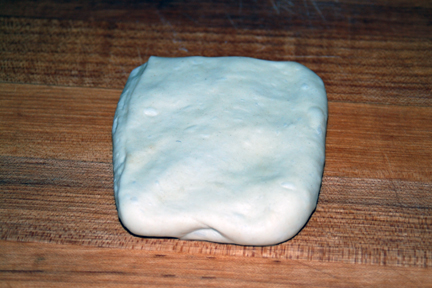



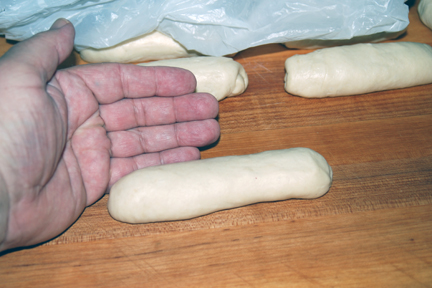
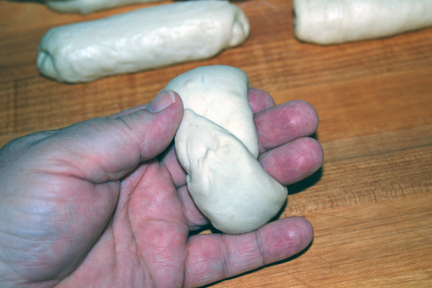
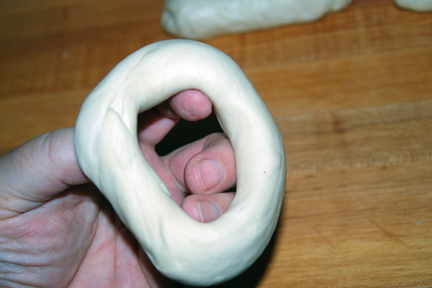

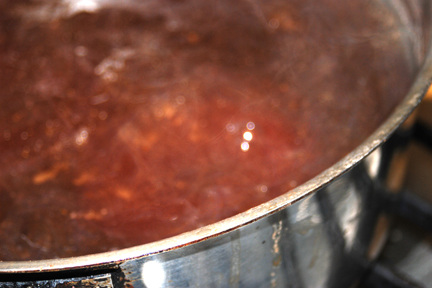
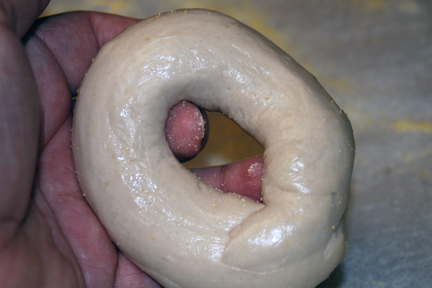





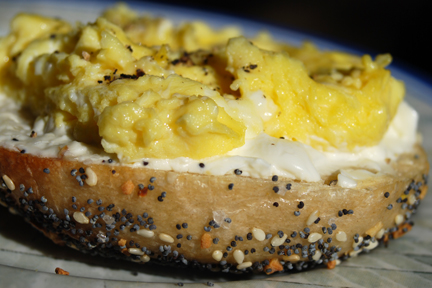

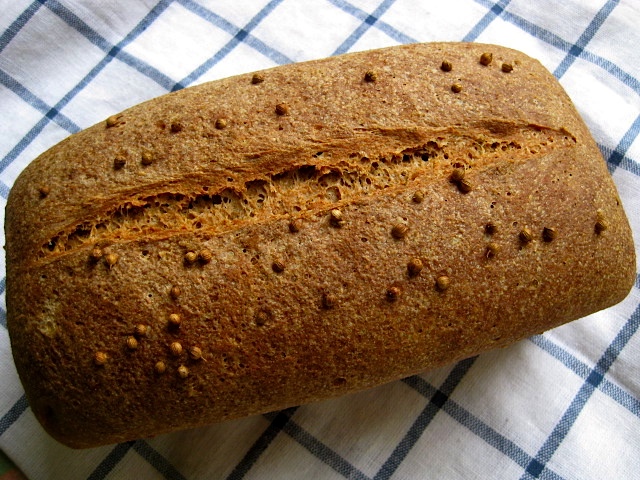
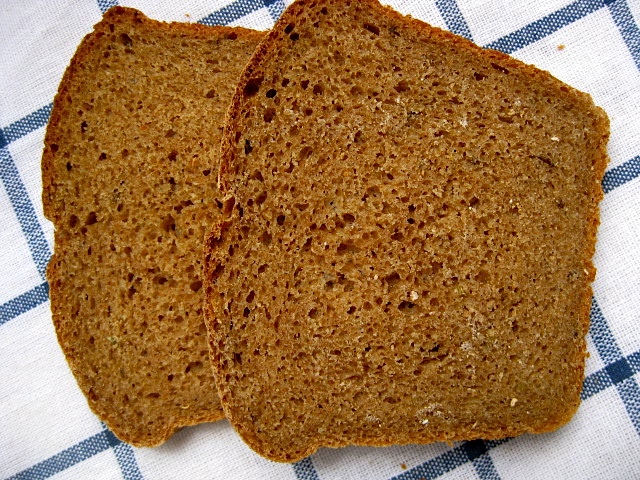 Lübecker Crumb
Lübecker Crumb







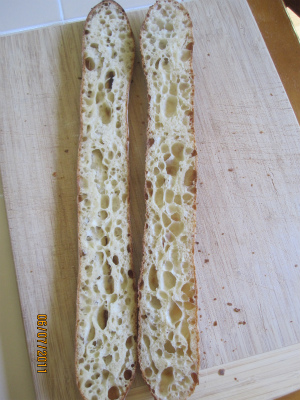

 I mixed all the ingredients except the salt for a minute, then add the salt, mix it again for a few minutes with my hands (Dough temperature(DT) 69F)
I mixed all the ingredients except the salt for a minute, then add the salt, mix it again for a few minutes with my hands (Dough temperature(DT) 69F) S&F x2 every 30 minutes ( I did in the air with my hands) ( DT was 70F both after the S&F)--Rest at room temperature was 26-28℃ /78.8F-82F for 4.5 hours until the dough is little flat and the surface is slightly bumpy.
S&F x2 every 30 minutes ( I did in the air with my hands) ( DT was 70F both after the S&F)--Rest at room temperature was 26-28℃ /78.8F-82F for 4.5 hours until the dough is little flat and the surface is slightly bumpy.

 The dough in the morning: I saw a lot of bubbles on the bottom. ( DT62.5F/16.9℃)
The dough in the morning: I saw a lot of bubbles on the bottom. ( DT62.5F/16.9℃) I put the dough on the floured wood board very gently. The bottom is face now.
I put the dough on the floured wood board very gently. The bottom is face now. Stretch the dough X way to make a rectangle around 35cm x11cm is better ( I stretched too much this time I did 41cmx11cm)
Stretch the dough X way to make a rectangle around 35cm x11cm is better ( I stretched too much this time I did 41cmx11cm)
 Using a ruler, make a fold like the picture. Pat the dough gently and
Using a ruler, make a fold like the picture. Pat the dough gently and Put tightly squeezed dump kitchen towels on the dough and take a bench time for 15-20 minutes ( I took 15 minutes )
Put tightly squeezed dump kitchen towels on the dough and take a bench time for 15-20 minutes ( I took 15 minutes ) After the bench time,
After the bench time, Using your finger tips, pat the dough gently... ( I feel like that I can shape the air in the crumb at this time)
Using your finger tips, pat the dough gently... ( I feel like that I can shape the air in the crumb at this time) Push the edge little harder and
Push the edge little harder and  Pat the rest of the dough with your finger tips again. ( If I didn't do this process, the crumb was tight... I think that both sides dough need some space to have airy crumb when you roll. )
Pat the rest of the dough with your finger tips again. ( If I didn't do this process, the crumb was tight... I think that both sides dough need some space to have airy crumb when you roll. ) Brush off the excess flour and roll and pinch the seam very well.
Brush off the excess flour and roll and pinch the seam very well. ( This picture is a different one. I just want show you how I pinch the dough)
( This picture is a different one. I just want show you how I pinch the dough) Proof : I put a tightly squeezed dump kitchen towels on the linen, then I put it on the top of the refregerator for 35-40 minutes at 70-71F /21-21.7℃
Proof : I put a tightly squeezed dump kitchen towels on the linen, then I put it on the top of the refregerator for 35-40 minutes at 70-71F /21-21.7℃



 I practice to score baguettes a lot using playdough playing with my daughter because I am not good at it. I used to drag so much.. A couple of my Cookpad friends gave me great advices. I am still afraid of it....
I practice to score baguettes a lot using playdough playing with my daughter because I am not good at it. I used to drag so much.. A couple of my Cookpad friends gave me great advices. I am still afraid of it.... 2)
2)
 3)
3)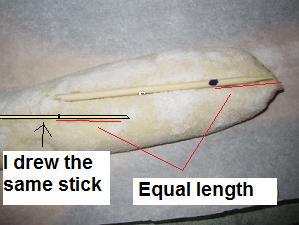 You can prepare the scoring lines using a stick before you acutally score your baguette dough. The red line ( 2.5-3cm )below will be a lap between first score line and the second one, the same lap for the second line and the third one and other third and forth lones, too.
You can prepare the scoring lines using a stick before you acutally score your baguette dough. The red line ( 2.5-3cm )below will be a lap between first score line and the second one, the same lap for the second line and the third one and other third and forth lones, too.
 I found out that I can score very straight when I use No.1 way. My Cookpad friend suggested me the way. That is very helpful.. I don't think that my way fit everybody but, It may help some TFL members.
I found out that I can score very straight when I use No.1 way. My Cookpad friend suggested me the way. That is very helpful.. I don't think that my way fit everybody but, It may help some TFL members.